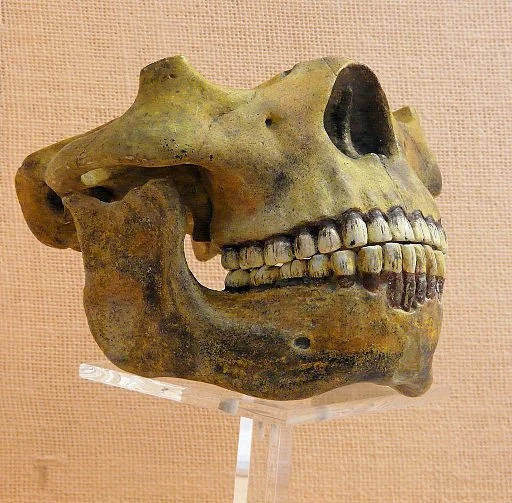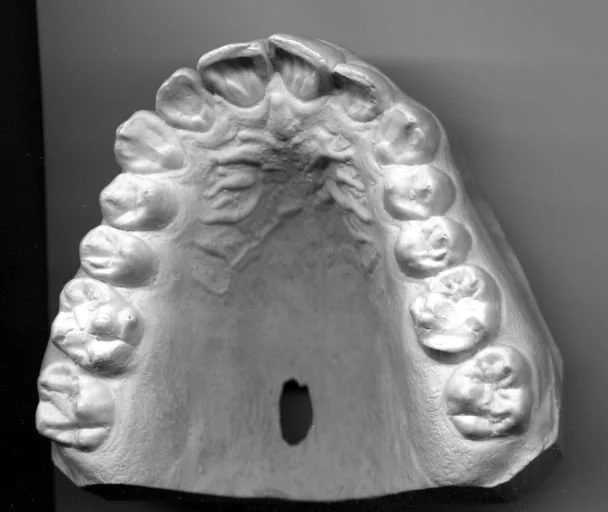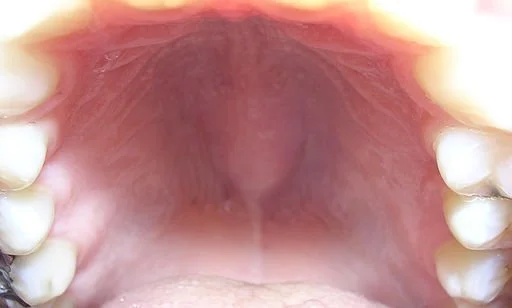https://commons.wikimedia.org/wiki/File:Homo_heidelbergensis_(Replika)_2.JPGGerbil, CC BY-SA 3.0 <https://creativecommons.org/licenses/by-sa/3.0>, via Wikimedia Commons
Deborah Tosline wrote and published “Skin Remodeling DIY: An Introduction to the Underground World of Do-It-Yourself Skincare” in 2015. Her approach to skin care is based on a scientific background, love of research and over 30 years of DIY skincare experience.
Over time, my skin care practice increasingly evolved into a holistic facial care program. While I continued to pursue advanced skin care, I began to integrate facial muscle and facial bone strengthening exercises into my routine. I also implemented oral and neck posture corrections. Based on evolution, neuroplasticity and watching how the body heals, I am convinced that to some extent we can remodel ourselves using DIY skills. When I practice guitar the skin on my fingers gets thicker. The swinging arm of tennis players develops stronger bones, etc… our body and brain are designed to adapt.
Under this premise it’s easy for me to embrace an ancient natural tongue placement referred to during contemporary times as mewing or orthotropics. Mewing is reported to maintain jaw width, support proper teeth alignment and promote a healthy nasal cavity all of which contribute to maintaining facial bone architecture and shape.
On the day that I read about mewing, I immediately began practicing natural and proper tongue placement and have not been slack jawed since.
As orthodontists, John Mew and his son Dr. Mike Mew developed mewing to promote proper tongue and oral posture. The Mew’s continue to expand orthotropic techniques to improve jaw stability, teeth alignment, physical health and facial appearance.
John Mew theorized that the reason that jaws became increasingly small and recessed after the 18th century Industrial Revolution was due to changes in diet and lifestyle rather than genetics. The paleontological fossil record supports his theory and shows that facial bone structure is dependent on usage.
https://commons.wikimedia.org/wiki/File:Upper_Jaw_Dentition.jpeg Stotan at en.wikipedia, Public domain, via Wikimedia Commons
Having a narrow jaw can lead to discomfort, headaches and jaw pain, crowded teeth, difficulty breathing and other issues.
The analysis of thousands of ancient skulls showed that skulls of contemporary folks and pre-industrial farmers had crowded teeth and signs of oral disease but that Stone Age hunter-gatherers had nearly perfect dental health.
Although anecdotal information is persuasive, to better understand the impacts of mewing scientific studies are needed.
Mewing consists of resting the tongue, including the back third of the tongue, on the roof of the mouth, with light pressure.
Close the mouth
Seal the lips
Teeth lightly touch
Tongue is completely relaxed
Main body of the tongue rests on the roof of the mouth
Tip of tongue rests near the back of the upper front teeth
When mewing, the tongue rests against the palate of the mouth even when drinking fluids. This pressure supports the mid-section of the face and nasal cavity. Mewing may feel strange at first but with time it becomes an unconscious action.
https://commons.wikimedia.org/wiki/File:06-06-06palataltori.jpg Photo taken by dozenist, CC BY-SA 3.0 <http://creativecommons.org/licenses/by-sa/3.0/>, via Wikimedia Commons
Good oral posture includes proper alignment of the teeth, lips, tongue and jaw. Mewing may improve the muscle tone and appearance of the jaw. Oral posture may be further improved when other orthotropic practices are implemented like chewing gum or eating hard foods.
I can’t remember when I began mewing. It may have been 3 to 5 years ago. I do remember that mewing felt cozy. Within the first two weeks I woke up in the mewing position and I knew that mewing had become natural to me. With rare exception I breath through my nose and keep my lips sealed which is reported to be excellent for gum and teeth health. I continue to mew.
https://commons.wikimedia.org/wiki/File:1109_Muscles_that_Move_the_Tongue.jpg OpenStax, CC BY 3.0 <https://creativecommons.org/licenses/by/3.0>, via Wikimedia Commons
I’ve only experienced positive benefits from practicing mewing however, mewing may not be appropriate for everyone. Mewing should not be used to address medical conditions without a doctor consultation. While mewing one may experience:
Facial muscle soreness
Headaches
Temporomandibular joint (TMJ ) disorders – check with dentist before mewing
Moving teeth — expanding the palate could potentially
Incorrect mewing could cause poor teeth shift over time.
Psychological distress — maintain realistic expectations when mewing
It is easy for me to continue to pursue the mewing method. I believe in the theory that tongue placement expands jaw width, helps maintain lift in the nasal cavity, can minimize a double chin and support a defined jawline. When I practice mewing, I experience optimum oral posture that supports my well-being. And guess what, mewing works forever! The teeth remain moveable throughout life, as proven by orthodontics.
I adore mewing, it feels natural to me and I embrace nature and natural.
If you are curious about mewing check out the amazing before and after photos submitted by men and women, young and some older to evaluate their anecdotal mewing results.
If you need more information, check out the local library, search the Internet, or check out my past Blog articles. Of course, it would be an honor to me if you purchased my facial care book. Thank you!
Take good care of yourselves!
XO Deborah
This article is intended to be used as general information only and is in no way intended to replace medical advice, be used as a medical treatment program, diagnosis, or cure of any disease or medical condition. There are no warranties, expressed or implied, regarding the effectiveness of the practices described in this article. Products or substances discussed herein are for educational purposes only and are not intended as recommendations of the author.



